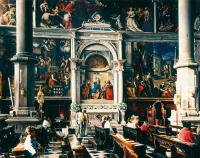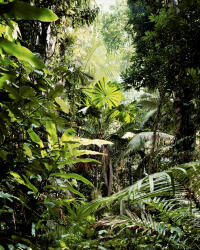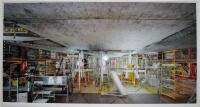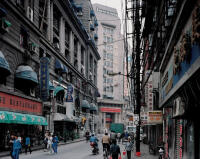Thomas Struth. Fotografien 1978 – 2010
11.06.2010 – 12.09.2010
Curated by Tobia Bezzola.
Location Pfister-Bau (Grosser Ausstellungssaal, ehem. Bührlesaal).
Curated by Tobia Bezzola.
Location Pfister-Bau (Grosser Ausstellungssaal, ehem. Bührlesaal).
For several decades, Kunsthaus Zurich has been setting up retrospectives of contemporary artists who are at the peak of their creativity. In this process great attention was also repeatedly paid to photographic art, and exhibitions with a pioneering character were organized: 'Earth Beats – the Changing Face of Nature' (2021), 'The Art of the Archive – Photos from the Archive of the L.A.P.D.' and Miroslav Tichý (both 2005), 'Wallflowers – Grosse Fotografien' (2002), MAGNUM (2000 and 1990), and also 'Robert Frank – Moving Out' (1995), to name only some of the most recent.
The overview, put together in cooperation with the artist, included 110 photographs from all creative phases from 1980 to 2009. The concise exhibition shows not only the multi-faceted spectrum of major themes – public, architecture, landscape, and even technology and family portraits – but also a line of development from the straightforward black-and-white works of the Becher pupil to the monumental, richly detailed and carefully composed views, such as that of Cape Canaveral.
Since the early 1980s, Thomas Struth, born in Dusseldorf in 1954, has developed an unmistakable approach and a fascinating repertoire of themes in his photography; at the same time, he has remained open to the special opportunities of this medium. In our times, so strongly influenced by a flood of images in the media, Struth’s work has given the genre of photography a new intensity and integrity.
After completing his museum photographs with the series of works created in the Museo del Prado in 2017, Struth began to try out possibilities for a new group of works. They were to combine his fascination in complex visual structures with his long-term interest in the mentality of various cultures, and also in the structures and technologies these cultures are able to think up and build. The latest work can be seen as a further development of Struth’s interest in a ‘history of ambition,’ which become visible in the collective achievements of a culture, whether in the form of a medieval cathedral, the structure of a city or the construction of a spaceship. With a format of up to 2 x 3.8 meters, the pictures of the restoration of the space shuttle Endeavour and its semi-submersible capsule are among the largest Struth has mad until now. For the first time, some of the works were also processed digitally.
The painstakingly researched review of the exhibition by Nadine Olonetzky got to the heart of Thomas Struth’s achievement as an artist and thus also to the associated ambivalence of his consequent (not only financial) success: ‘In these photographs [of the speculative commercial structure in Hongkong] it is not about cult sites and sightseeing objects but about living with the minimum existential necessities. That these pictures in their turn are successful both commercially and socially, embodying, so to speak, what is valuable and what is recognized in itself, is an irony of fate.’ (NZZ am Sonntag, 7.4.2010, p. 55).
[Cathérine Hug]
Further information
no exhibition catalog online
Thomas Struth on four decades of artistic productivity: 'I know more, see more, and suffer more.'Wallpaper*, March 2022
93 days
1 Artist
1 Artist
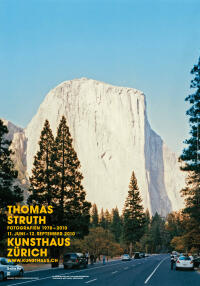
1/6
exhibition poster
Design: Crafft Kommunikation AG, Zürich / Photo: Thomas Struth
Design: Crafft Kommunikation AG, Zürich / Photo: Thomas Struth
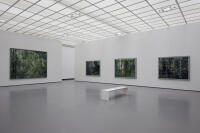
2/6
exhibition view
© Thomas Struth © Ausstellungsansichten FBM Studio, Zürich
© Thomas Struth © Ausstellungsansichten FBM Studio, Zürich
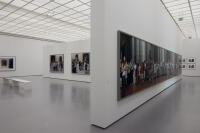
3/6
exhibition view
© Thomas Struth © Ausstellungsansichten FBM Studio, Zürich
© Thomas Struth © Ausstellungsansichten FBM Studio, Zürich
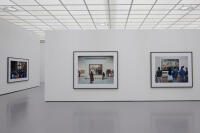
4/6
exhibition view
© Thomas Struth © Ausstellungsansichten FBM Studio, Zürich
© Thomas Struth © Ausstellungsansichten FBM Studio, Zürich

5/6
exhibition view
© Thomas Struth © Ausstellungsansichten FBM Studio, Zürich
© Thomas Struth © Ausstellungsansichten FBM Studio, Zürich
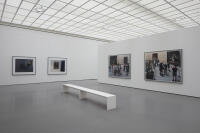
6/6
exhibition view
© Thomas Struth © Ausstellungsansichten FBM Studio, Zürich
© Thomas Struth © Ausstellungsansichten FBM Studio, Zürich
1/6
